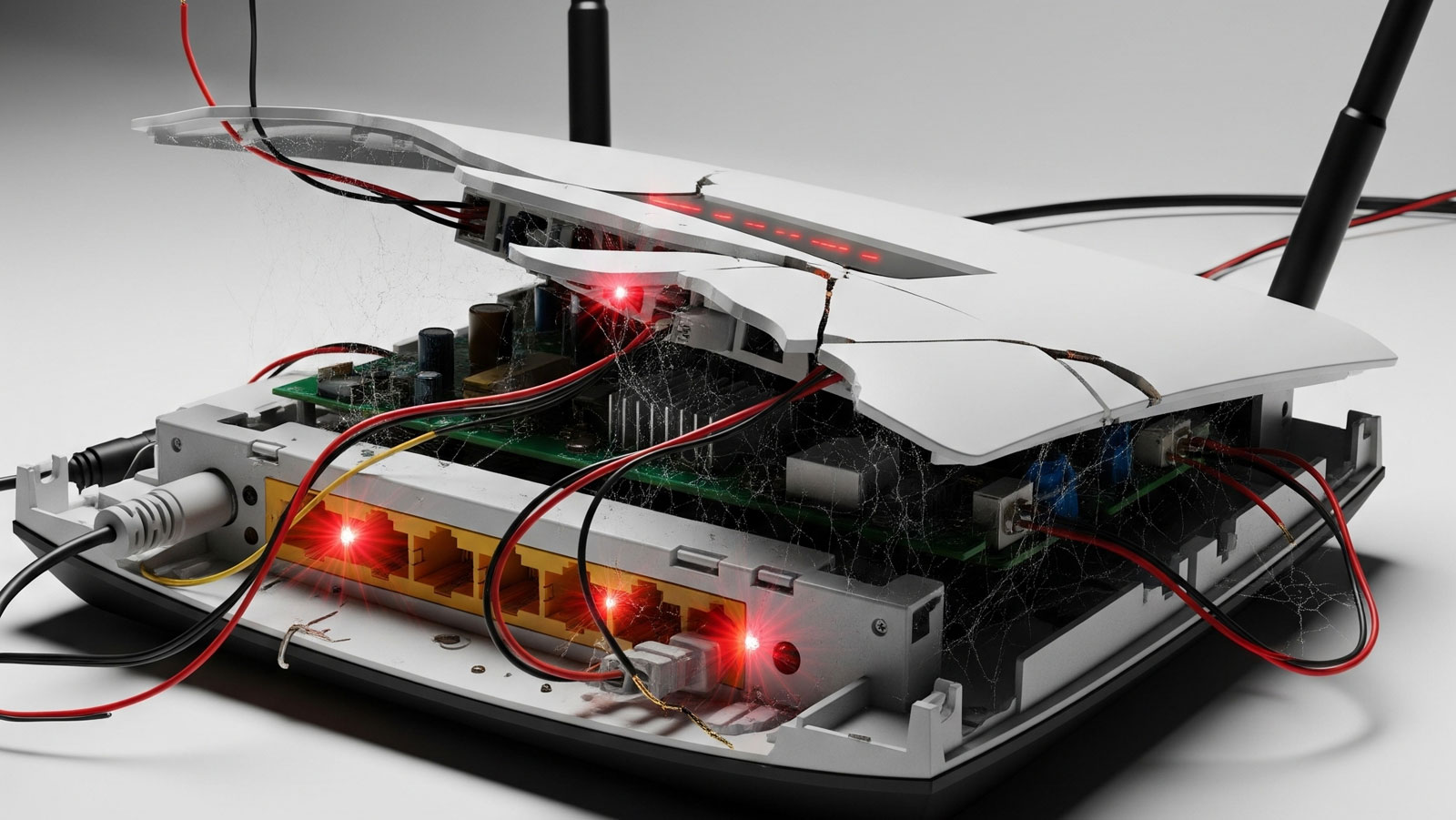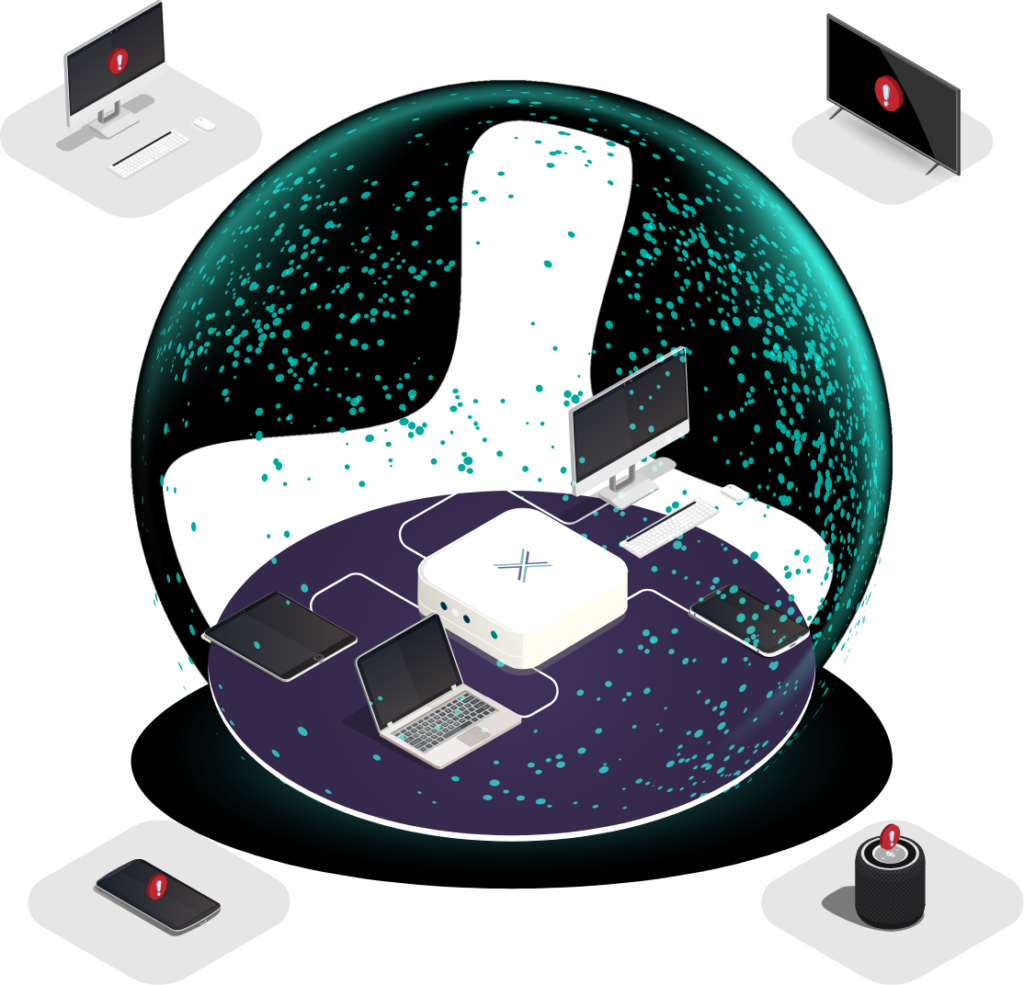Router Vulnerabilities Are the Blind Spot You Can’t Ignore
Organisations spend heavily on servers, cloud security and endpoint protection. Yet, the device that sits between staff and the internet, the router, often receives little attention. Most routers are unmanaged, unmonitored and left with outdated software. Attackers know this and take advantage.
This makes routers a critical blind spot in security. The danger increases when staff connect from the uncontrolled network edge: homes, hotels, serviced offices or client sites. In these environments, routers are rarely maintained by IT but are still the entry point into company systems.
Why Routers Are the Weakest Link
Routers are embedded systems with long life cycles. Many ship with firmware that is rarely updated and sometimes go out of support even before being widely adopted. They may contain outdated drivers, insecure protocols and default settings that remain unchanged.
Researchers have shown that most consumer and small business routers in active use today contain known vulnerabilities. Attackers actively scan the internet for these weak devices and exploit them automatically.
Examples include:
- Asus routers that shipped with backdoors allowing attackers to gain remote access.
- TP-Link flaws that could give attackers complete control, often exploited by botnets to attack Microsoft 365 accounts.
- DrayTek vulnerabilities that exposed remote management features to the internet.
- Netgear routers with persistent weaknesses that left households and small offices open to attack.
- The infamous Mirai malware, which turned insecure routers into massive botnets used for denial-of-service attacks.
These examples highlight how common and serious router flaws are. They are not minor issues; they are exploited daily at scale.
Real-World Dangers at the Uncontrolled Edge
Router vulnerabilities become even more significant when staff connect from unmanaged environments.
- At home: An employee signs into company dashboards from their kitchen table. Their router has not had a firmware update in years. A family member’s gaming laptop is infected with malware, creating an invisible bridge into business systems.
- In hotels: A manager travels for work and connects to hotel Wi-Fi to check sensitive data. The router is shared by hundreds of guests and has never been patched. Attackers in neighbouring rooms can exploit it with little effort.
- Serviced offices: A solicitor works from a co-working space. The building’s router is maintained by the provider, not the law firm. It has weak settings and known vulnerabilities.
- Client sites: A consultant signs in to internal dashboards from a client’s office. The company has no control or visibility of that router, yet its data passes through it.
These scenarios show how easily compromised routers at the uncontrolled edge can become gateways into company systems.
Why Traditional Defences Fall Short
Organisations often assume that VPNs and endpoint tools are enough to protect remote connections. Both play a role, but neither solves the problem of insecure routers.
- VPNs encrypt traffic in transit, which prevents outsiders from snooping. But they do not secure the router itself. If the router is compromised, attackers can intercept or alter traffic before it enters the VPN tunnel.
- Endpoint protection secures the laptop or phone, but it cannot patch or reconfigure the router that sits between the device and company systems.
If the entry point is already compromised, these tools are built on shaky ground.
Why Router Vulnerabilities Are Easy to Overlook
Routers are often treated as background equipment. They are installed, configured once and then forgotten. Unlike laptops or servers, they are not refreshed every few years. Many households and small offices still use routers that are five to ten years old.
This creates a dangerous assumption: if the internet works, the router must be fine. In reality, the router could be riddled with vulnerabilities and quietly exploited without anyone noticing.
For IT teams, the problem is magnified by scale. A single organisation might have hundreds of staff connecting from different locations, each with a unique router model, firmware version and risk profile. Monitoring and patching them individually is impossible.
Loxada’s Secure On-Ramp: Closing the Gap
Loxada addresses this blind spot directly. Instead of relying on routers that staff happen to own or use, Loxada provides managed routers with custom secure firmware.
Key features include:
- Factory firmware replaced: Every trace of the original software is removed, eliminating hidden backdoors and vendor flaws.
- Automatic updates: Routers update themselves without user action, ensuring patches are applied quickly.
- Traffic separation: Business systems are isolated from personal devices on the same local Wi-Fi. A child’s tablet or a guest’s laptop cannot interfere with company access.
- Central management: IT teams keep visibility and control of routers at the edge, even across hundreds of locations.
- Plug-and-play setup: Staff simply connect to the router. No technical knowledge or software installation is required.
This turns unsafe edge environments into trusted, controlled access points.
Why This Matters Now
Attackers increasingly target routers because they are easier to compromise than hardened servers or cloud platforms. Exploiting a single router can open the door to entire company networks.
Government agencies such as the NSA, GCHQ and CISA have issued repeated warnings about edge device risks. Their guidance is consistent: use secure, centrally managed solutions that enforce updates and prevent lateral movement.
Loxada translates that guidance into practice. By focusing on the uncontrolled edge, it secures the point where traditional tools cannot.
The Bottom Line
Routers are often overlooked, yet they are the weakest link in modern security. Vulnerable routers at the uncontrolled network edge put organisations at risk, whether staff connect from homes, hotels, serviced offices or client sites.
VPNs and endpoint protection cannot close this gap. Only by addressing the router itself can organisations remove this blind spot.
Loxada provides the answer. With secure custom firmware, automatic updates and central management, our managed routers create a secure on-ramp into company systems. Staff connect safely, IT stays in control and organisations protect themselves against one of today’s most common and damaging threats.
It is time to stop ignoring the router and start securing it.

